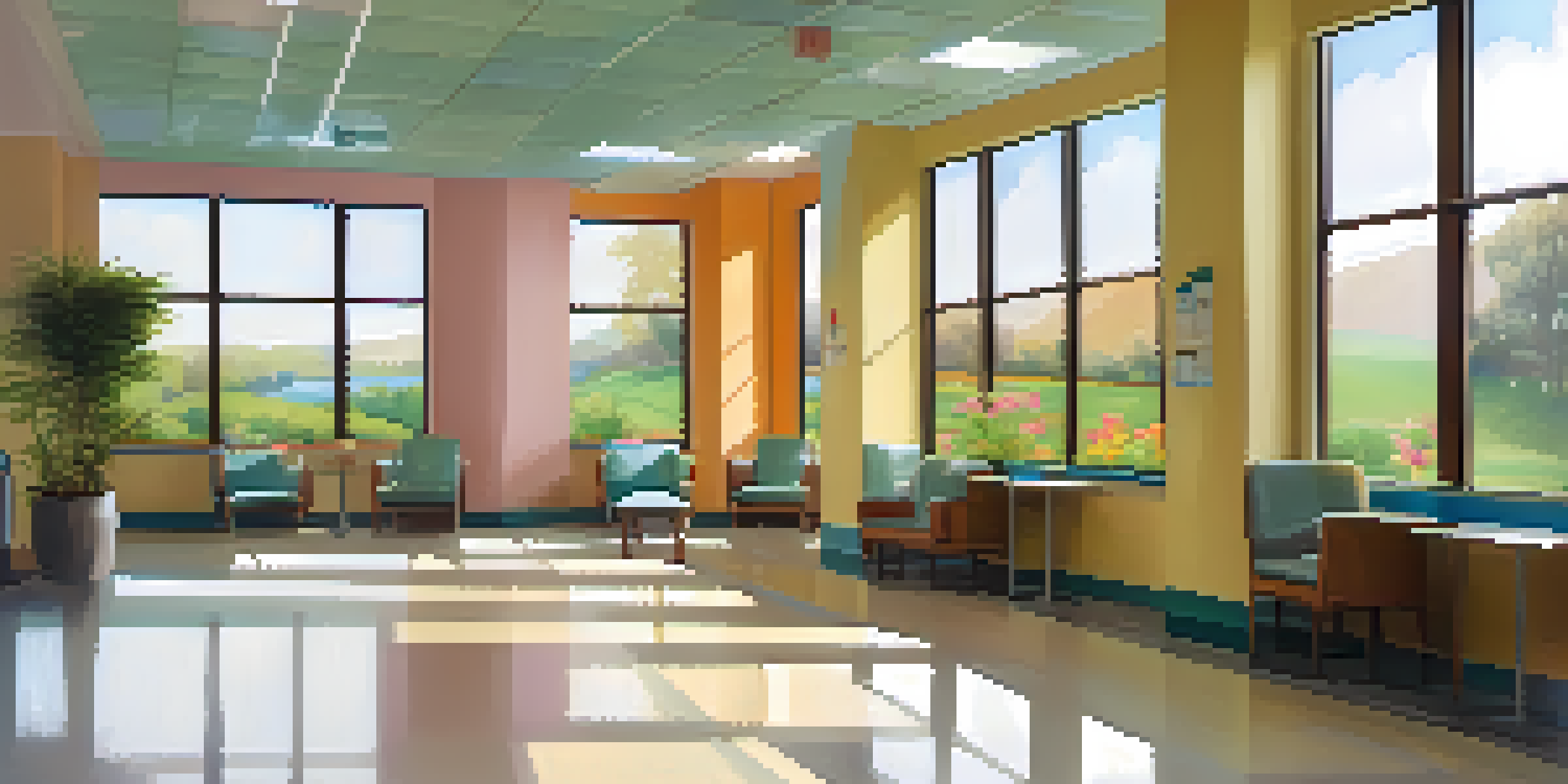Incorporating Local Artists in Healing Environment Design

The Importance of Healing Environments
Healing environments play a crucial role in promoting well-being and recovery. They are designed to nurture not just the body, but also the mind and spirit. By creating spaces that evoke calmness and positivity, we can significantly enhance the healing process.
Art enables us to find ourselves and lose ourselves at the same time.
In hospitals, clinics, and wellness centers, the atmosphere can impact patient outcomes. Research shows that natural light, soothing colors, and comforting sounds can aid in reducing stress and anxiety levels. This is where the incorporation of local artists can truly shine.
Local artists can bring a unique flair to these environments, transforming sterile spaces into vibrant, uplifting areas. Their work can resonate with the community, creating a sense of belonging and connection, which is vital for healing.
Benefits of Local Artwork in Healing Spaces
Incorporating local artwork into healing environments has numerous benefits. For starters, art can evoke emotions and stimulate memories, which can be particularly beneficial for patients dealing with mental health issues. It serves as a visual therapy, encouraging reflection and engagement.

Moreover, local artwork often reflects the community’s culture and history, fostering a sense of pride and identity among patients and visitors. This familiarity can be comforting in times of distress, creating a sanctuary that feels more welcoming and less clinical.
Healing Environments Enhance Recovery
Well-designed spaces that promote calmness can significantly improve patient well-being and recovery outcomes.
Additionally, the presence of art can distract patients from pain and discomfort, providing a mental escape. This distraction can lead to lower anxiety levels and a more positive outlook, which are essential components of the healing journey.
Finding and Collaborating with Local Artists
Finding local artists to collaborate with can be an enriching experience for healthcare facilities. Community art programs, local galleries, and art schools are excellent places to discover talented individuals eager to contribute their work. Networking within these circles can open doors to numerous creative possibilities.
The best way to predict the future is to create it.
Collaboration is key in this process. It's essential for designers and artists to communicate effectively, ensuring that the artwork aligns with the healing environment's goals. Regular meetings and brainstorming sessions can help both parties understand the vision and aesthetic desired.
Furthermore, involving local artists in the design process can lead to innovative solutions that reflect the community’s spirit. This partnership not only benefits the artists but also enriches the environment, making it more meaningful for those who use it.
Types of Art to Consider for Healing Spaces
When selecting art for healing spaces, it's important to consider the type of artwork that will best serve its purpose. Murals, for example, can create an immersive experience, making walls come alive with color and imagery. They can transform a dull corridor into an inspiring journey.
Sculptures and installations can also be impactful, providing three-dimensional elements that invite interaction. Placing these pieces in gardens or waiting areas can encourage patients and visitors to engage with their surroundings in a meaningful way.
Local Art Fosters Community Connection
Incorporating local artwork into healing spaces creates a sense of belonging and reflects the community's culture.
Photography is another excellent option, especially when it showcases local landscapes or community events. These familiar images can evoke positive memories and emotions, further enhancing the healing environment's overall effect.
Engaging Patients and Visitors with Art
Engaging patients and visitors with art can enhance their experience in healing spaces. Interactive art installations or workshops can invite patients to express themselves creatively, providing an outlet for emotions and thoughts. This engagement can be particularly therapeutic, allowing for personal reflection.
Moreover, guided art tours can also be organized to educate patients and visitors about the artwork on display. By sharing the stories behind the pieces, we foster a connection between the art, the artists, and the community, making the environment feel more personal.
Incorporating art in this way not only enhances the aesthetic value of the space but also promotes a sense of community and belonging. This connectedness is essential for emotional well-being during the healing process.
Evaluating the Impact of Local Art in Healing Spaces
Evaluating the impact of local art in healing environments is essential for understanding its effectiveness. Feedback from patients, families, and staff can provide valuable insights into how the art influences mood and overall experience. Surveys or informal discussions can reveal much about the emotional responses evoked by the artwork.
Additionally, tracking metrics such as patient recovery times, anxiety levels, and overall satisfaction can help assess the impact of incorporating local art. These data points can guide future art initiatives, ensuring that the healing environment continues to evolve.
Engagement Through Interactive Art
Engaging patients and visitors with art enhances their experience and promotes emotional well-being during the healing process.
By regularly evaluating these factors, healthcare facilities can adapt their art programs to better serve the needs of their community. This commitment to improvement not only enhances the healing experience but also fosters a culture of care and compassion.
A Community-Centric Approach to Healing Design
Taking a community-centric approach to healing environment design can lead to more meaningful spaces. By prioritizing local artists and their unique perspectives, we create environments that reflect the diverse narratives of our communities. This approach encourages inclusivity and celebrates local culture.
Moreover, involving the community in the design process fosters ownership and pride. When locals see their artists represented in healing spaces, it strengthens their connection to the environment and enhances their overall experience.

Ultimately, a community-centric approach not only benefits patients but also uplifts local artists, creating a symbiotic relationship that enriches both the healing space and the community as a whole.